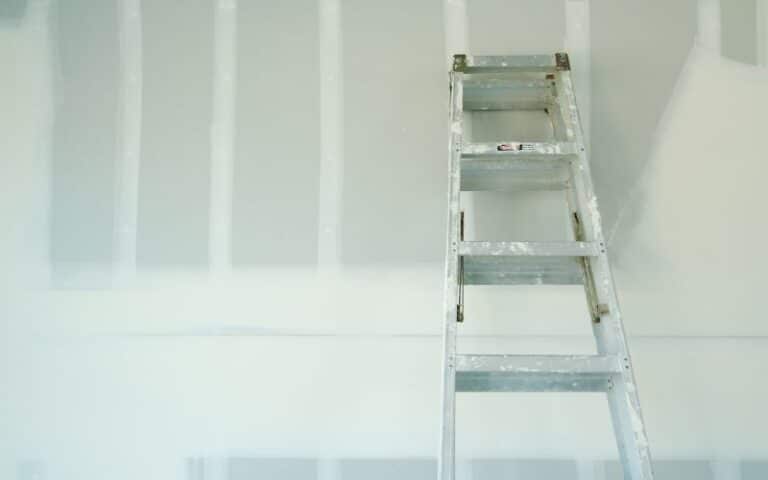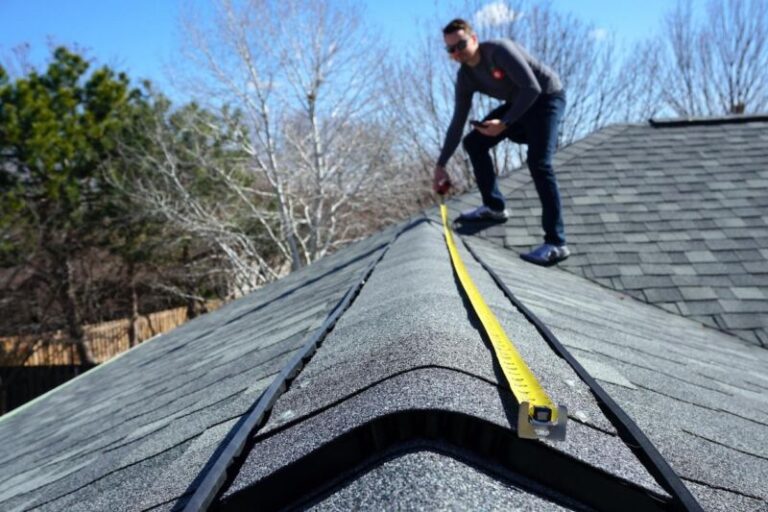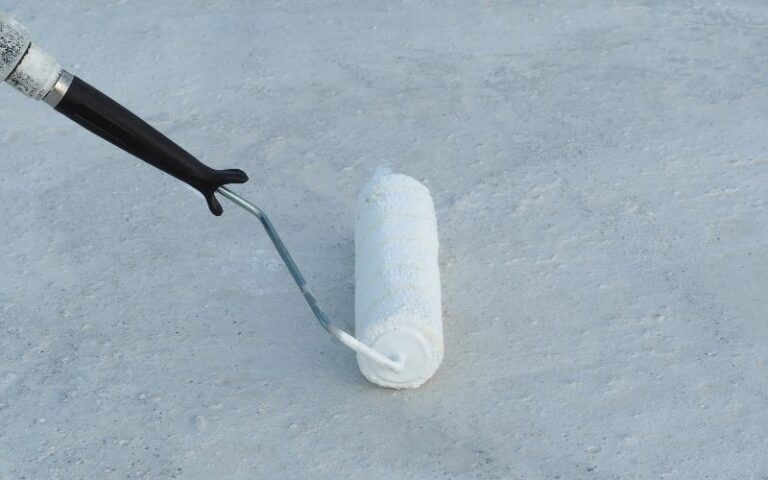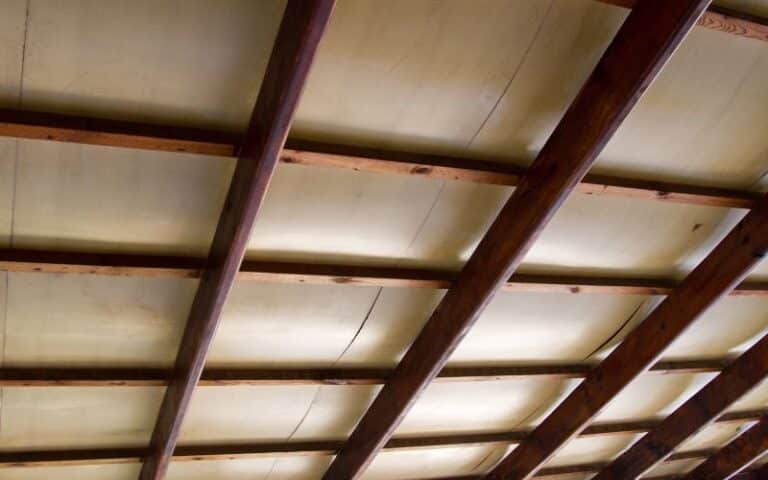Over the years, we have seen different metal roof underlayments and their evolution.
From using felt to synthetic underlayment to house wraps, all these underlayments do the same thing, and it’s just that they are superior to each other.
So the next underlayment developed has an added advantage over the previous one as they evolved.
House wraps are a water-resistive barrier or WRB that acts as a secondary defense against the weather by keeping moisture and preventing dust and air from traveling inside from outside.
You should use a house wrap regardless of the type of home since it acts as a moisture barrier.
Yes, you can use house wrap under a metal roof. The reason is that your house wrap is a type of metal roof underlayment with a high perm rate that makes it suitable for use under a metal roof. It helps protect your house from preventing air infiltration, maintains R-values, conserves energy, and makes the interior more comfortable.
Ready for a Roofing Quiz?
Can Tyvek Be Used Under a Metal Roof?
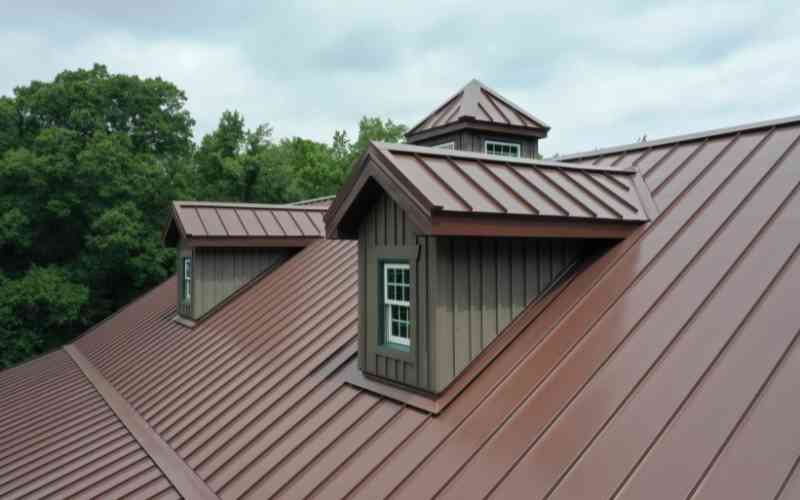
Tyvek, also known as DuPont Tyvek home wrap, is one of the types of metal roof underlayment you can use under a metal roof.
Tyvek roof underlayment comprises high-density polyethylene fibers and is synthetic underlayment. The underlayment has a slip-resistant surface that makes walking safer.
Tyvek is a woven fabric that is tight enough to keep water molecules out but not so tight that air can’t get through.
Felt was formerly the go-to substance for roofs when considering installing metal roof underlayment, and although felt has evolved over the years, house wraps also have the perks that make them stand out.
Tyvek has an advantage over felt paper in that it is stronger and more durable than a house wrap. Due to this, it is the best house wrap for insulation presently.
I’ll be detailing the benefits of using DuPont Tyvek home wrap.
Benefits of DuPont Tyvek Home Wrap
Here are some benefits of using DuPont Tyvek home wrap under metal roofing, and these include;
- It has a high permeability that allows the wall to breathe when it does get wet, allowing water to dry out. Most people think installing a house wrap is majorly to protect the walls from water, but we forget that the walls need to breathe. DuPont Tyvek home wrap provides you with this advantage.
- You can print on Tyvek; printing on Tyvek is helpful when the walls are light-colored and the level of sunlight is high.
- DuPont Tyvek home wrap is recyclable. Unfortunately, the more construction waste that goes into the landfill, the more waste there is. So you should recycle Tyvek material to cut down on the trash when you finish with it.
- It is durable, i.e., it is firm and won’t break when put under a lot of pressure. It can stand up in places where other types of underlayment would break, making them useless. This feature is essential in the winter when the cold can cause tar paper to fall apart but not Tyvek.
- You can tape Tyvek to various surfaces while working, making the installation process faster. It doesn’t necessarily imply that Tyvek is easier to install, but it does mean that it is easier to stick with the current construction material.
- DuPont Tyvek has a much higher efficiency level than felt and keeps cold air out in the winter and the hot air out in the summer, allowing you to reduce the amount of time you spend running the air conditioner.
What Can I Put Under a Metal Roof?
When you think about having a metal roof installed on your home, much consideration goes into this: you want a metal roof that will last for a long time.
Therefore, you are most likely examining the items and the installation process. Metal roofing is an excellent investment since it is long-lasting, it can stay typically for 50 to 70 years in the average climate zone.
The appropriate combination of products, including high-quality roof underlayment, is essential for any roof, as with any other roof.
As a result, what do you put beneath a metal roof? Let’s take a closer look at what’s underneath!
Types of Metal Roof Underlayment
There are various types of metal roof underlayment used when roofing your house, and they include;
- Asphalt-saturated felt underlayment
- Synthetic sheet underlayment
- Tyvek roof underlayment
- Rubberized asphalt
- High-temperature roof underlayment
- Peel & stick roof underlayment
- Radiant barrier roof underlayment
#1. Asphalt-saturated Felt underlayment
An asphalt-saturated felt underlayment has a flexible base layer saturated with asphalt to keep water out.
It is one of the most common metal roof underlayments residential roofers use, either an organic or fiberglass base.
It comes in 15-pound, and 30-pound thicknesses, with the 30-pound thicker, making it more durable.
Asphalt-saturated felt underlayment is water-resistant, but it is not completely water-proof.
#2. Synthetic Sheet Underlayment
Synthetic roofing underlayment fixes the felt metal roofing underlayment problems. It consists of polyethylene or polypropylene and fiberglass, which is tear-resistant and impermeable.
However, it is more expensive than felt underlayment, and although durable, it doesn’t ventilate quite as well.
#3. Roof Underlayment
Synthetic Tyvek roof underlayment is from high-density polyethylene fibers. This metal roof underlayment protects the roof from water and other things.
The underlayment has a slippery surface that makes it safer to walk on. When appropriately installed, it keeps air from getting inside the walls and protects your insulation’s rated R-value.
#4. Rubberized Asphalt
Rubberized asphalt is a word that can apply to various types of underlayment. However, they all have one thing in common: they have the appearance and feel of rubber.
#5. High-temperature Roof Underlayment
High-temperature roof underlayment has remarkable heat resistance, making it an excellent choice for usage in climates with scorching summers and winters.
#6. Peel & Stick Roof Underlayment
Peel and stick roof underlayment is a metal roof underlayment with an adhesive material that you can install by peeling and sticking it.
It does not require nailing, thereby decreasing water infiltration through nail penetrations. In addition, it is highly resistant to fire.
#7. Radiant Barrier Roof Underlayment
Radiant barriers reflect infrared energy to help keep the temperature stable, which leads to a more energy-efficient home.
In addition, radiant barrier underlayment doesn’t let radiant heat energy pass through it, so it doesn’t get hot.
Conclusion
In summary, house wraps act as an extra layer of protection in our homes. Although there are different types, the best one to use is DuPont Tyvek home wrap due to its benefits over the other types.
In addition, you want to use the best metal roof underlayment so that your roof will last for a long time.

